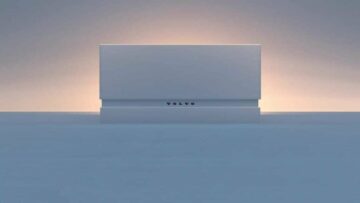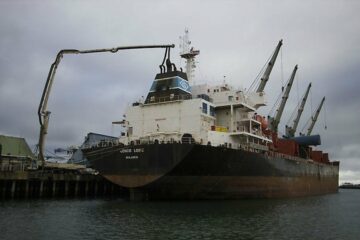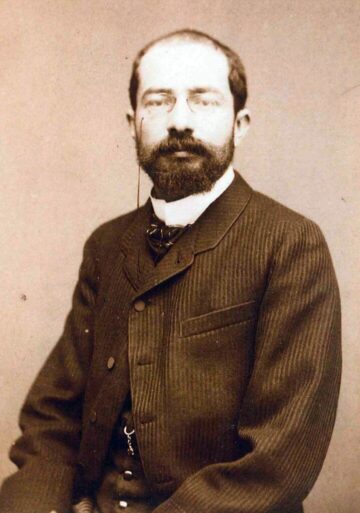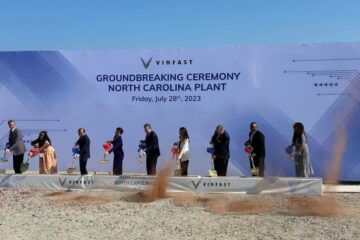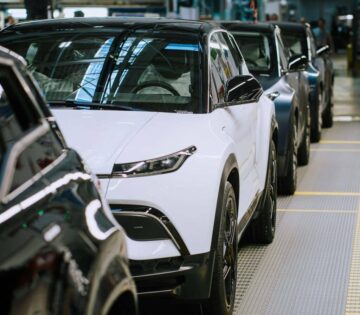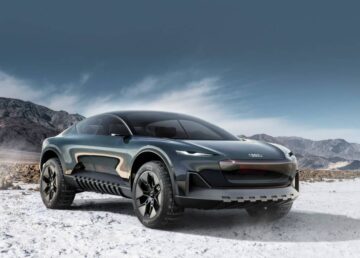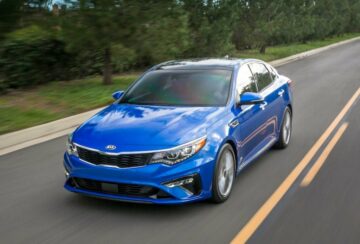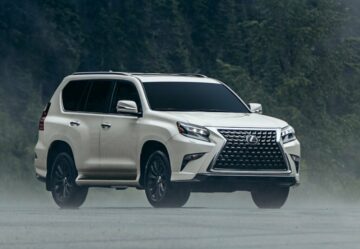It was an era when World War II was still fresh in the minds of many Americans, and Japanese were as likely to be the object of ridicule and prejudice rather than respect. It’s a time when “Made In Japan” meant poor quality to American consumers, even as they bought Sony transistor radios, the first Japanese product many consumers bought.
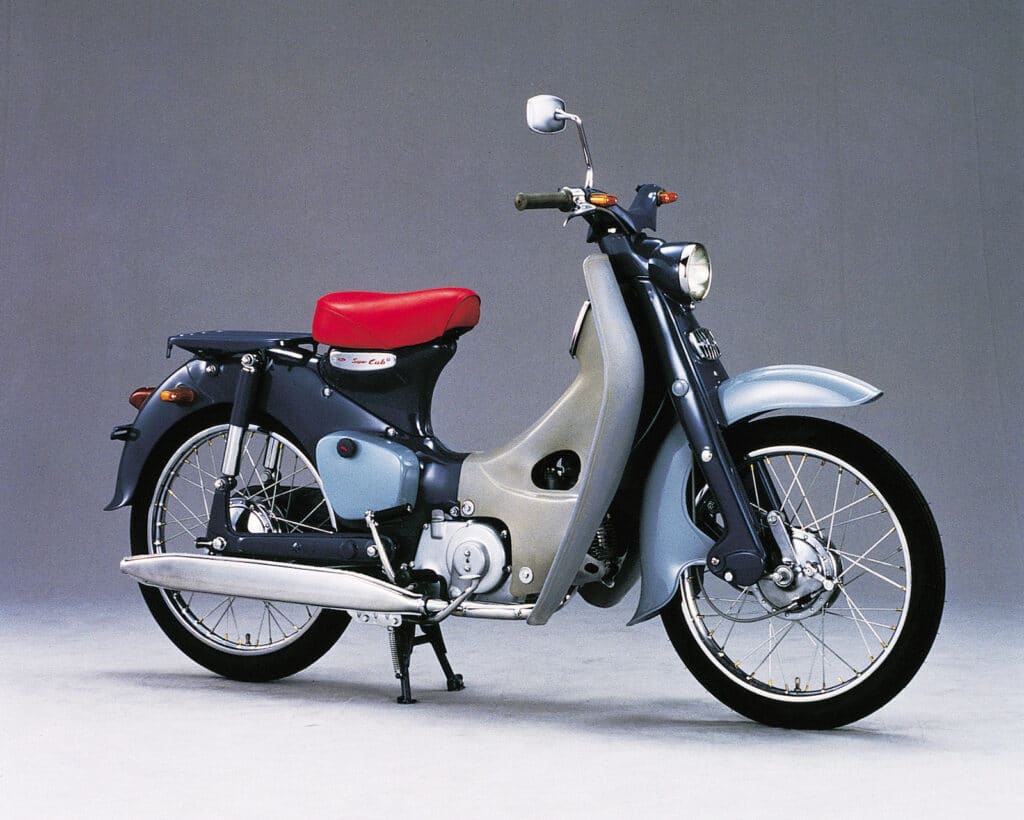
That makes a pivotal automotive event all the more remarkable, when this week in 1959, American Honda Motor Co. is established in Torrance, California as the North American subsidiary of the Honda Motor Co.
Among the company’s first products is the Super Cub, which is renamed the Honda 50 in the U.S. They are far from a raging success, as they battle the dominant motorcycle brands in the U.S market. In the first three months, Honda sells a mere 170 units, an admittedly slow start.
It’s tough going for Honda, as Japan only exported 4% of its motorcycle production, a small salvo that did little to dent British bike builders, who held a 49% market share in the U.S. At the time, the American motorcycle market is dominated by Harley-Davidson, as well as Britain’s BSA, Triumph and Norton, and Italy’s Moto Guzzi.
But this week in 1959 proves to be a key moment for the company, one founded by a man who was always seen as a rebel in the industry. But Soichiro Honda’s start in life never hinted at what he would become, nor what he would accomplish.
Beginnings
Soichiro Honda was the son of Gihei and Mika Honda, a blacksmith and his wife who live in rural Iwata-gun, Japan. Born Nov. 17, 1906, Soichiro had a passion for motors — until he saw his first car. That’s when everything changed. After an apprenticeship, Soichiro becomes a master mechanic by 1928, opening a repair shop in Hamamatsu, Japan, while participating in auto races and experimenting with engines.

The company grows to more than 30 employees. Yet by 1936, unable to find contentment repairing vehicles, Soichiro decides to enter manufacturing, forming Tokai Seiki to manufacture piston rings, with Toyota numbering among his clients.
But when Japan enters World War II in December 1941, the Japanese Ministry of Munitions takes control of the company, handing 40% of the firm’s equity to Toyota. Even worse, Soichiro is demoted from President to the senior managing director.
By 1944, as the tide is turning against Japan, a B-29 bombs the company’s Yamashita factory, followed a year later when the Nankai earthquake causes the collapse of the company’s Imawta Plant.
Selling the company’s remnants to Toyota for ¥450,000, Honda uses the proceeds to establish Honda Technical Research Institute in 1946. “We have consistently chosen a most difficult path filled with hardships,” Soichiro said.
Honda’s first bikes
After the war, Soichiro Honda came up with the idea of using surplus Imperial Army generator engines to power bicycles, then the most common form of transportation in Japan. It was a hit. With orders increasing and his stock of engines running low, Honda develops his on engine, the Type-A, in 1947. But the half-horsepower bike is anything but refined, earning the nickname “The Chimney” due to its smoky, smelly disposition.

Encouraged by his success, Soichiro establishes the Honda Motor Co. in 1948 with Takeo Fujisawa as he sets his sights on entering the highly competitive Japanese motorcycle market.
Capitalized at ¥1 million with 34 employees, a small factory is established in Hamamatsu to build the company’s first bike, the Type A. A year later, Honda introduces the Honda Dream D-Type, the company’s first true motorcycle. Powered by a 2-stroke, 96cc, 3-horsepower engine, it’s the first of Honda’s Dream motorcycles.
Looking for more
Honda proved successful in its home market As its lineup expanded, so much so, the company began investigating exporting its motorbikes. In 1956, Soichiro’s partner, Takeo Fujisawa, began investigating Southeast Asia and America as possible markets. “Instead of relying on a trading company,” Fujisawa said, “we should first take a look at the overseas market for ourselves. Then we’ll find the best way to do business there.”
While some in the company thought Honda would find exporting to Southeast Asia easier than America, the decision was made to start with America.

“To take up the challenge of the American market may be the most difficult thing to do,” Fujisawa concluded, “but it’s a critical step in expanding the export of our products. America is the stronghold of capitalism, and the center of the world’s economy. To succeed in the U.S. is to succeed worldwide.”
Fujisawa insisted on establishing their own sales network, they could control after-sales service better than if they relied on third parties. By November 1958, he’s chosen Los Angeles as their first market after visiting a number of potential cities feeling that its minimal rainfall and hospitable year-round climate would help stoke sales.
But because foreign currency being taken out of the country to start a firm abroad, Japan’s Ministry of Trade and Industry and Ministry of Finance had to approve the plan, as the amount of money bring taken out of Japan was subject to government limits.
Coming to America
In April 1959, Honda got the approval to take $250,000 out of the country for capital funding, allowing for the establishment of American Honda Motor Co. Inc. this week in 1959. It’s an inauspicious start; the company is headquartered in a former photography studio on West Pico Boulevard in Torrance, California.
And it’s not as if Honda is met with open arms. Many thought that Japan, having lost the war, couldn’t produce anything Americans might want. And with World War II still a recent memory, many thought any Japanese product would be a hard sell.
But the American motorcycle market is one-tenth the size of Japan’s, selling 60,000 units a year. And unlike Japan, motorbikes had a negative image in the United States, formed by gangs such as the “Hell’s Angels” and movies such as 1953’s “the Wild Ones” starring Marlon Brando.
While the larger, heavier British and American motorcycles sold for anywhere from $1,000 to $1,500 at the time, the smaller, lighter Honda sold for less than $250 with an electric starter, 3-speed transmission, automatic clutch and a step-through frame to make it easier to use for female riders, Honda aimed at those who never considered buying a motorcycle. It was a notion reinforced by the company’s marketing slogan, which stated that, “you meet the nicest people on a Honda,” as well as The Beach Boys’ “Little Honda,” which became a top 10 hit in 1964 when covered by The Hondells.
By 1965, sales reached $77 million, rendering the world’s largest motorcycle manufacturer, having enjoyed more success than any Japanese auto manufacturer.
And it’s in automobiles, where Honda would enjoy their biggest success.
- SEO Powered Content & PR Distribution. Get Amplified Today.
- EVM Finance. Unified Interface for Decentralized Finance. Access Here.
- Quantum Media Group. IR/PR Amplified. Access Here.
- PlatoAiStream. Web3 Data Intelligence. Knowledge Amplified. Access Here.
- Source: https://www.thedetroitbureau.com/2023/06/the-rearview-mirror-a-path-filled-with-hardships/
- :is
- :not
- :where
- $UP
- 000
- 10
- 17
- 30
- 50
- 500
- 60
- a
- accomplish
- After
- against
- aimed
- All
- Allowing
- alongside
- always
- america
- American
- Americans
- among
- amount
- an
- and
- Angeles
- any
- anything
- anywhere
- approval
- approve
- April
- ARE
- arms
- Army
- AS
- asia
- At
- auto
- Automatic
- automobiles
- automotive
- Battle
- BE
- Beach
- became
- because
- become
- becomes
- began
- being
- BEST
- Better
- bicycles
- Biggest
- born
- bought
- brands
- bring
- British
- BSA
- build
- builders
- Bureau
- business
- but
- Buying
- by
- california
- came
- capital
- capitalism
- car
- causes
- Center
- challenge
- changed
- chosen
- Cities
- clients
- Climate
- CO
- Collapse
- Common
- company
- Company’s
- competitive
- concluded
- considered
- Consumers
- control
- could
- country
- covered
- critical
- Currency
- December
- decision
- develops
- DID
- difficult
- Director
- do
- dominant
- dream
- due
- Earning
- Earthquake
- easier
- economy
- Electric
- employees
- Engine
- Engines
- enjoy
- Enter
- entering
- Enters
- equity
- Era
- establish
- established
- establishes
- establishing
- establishment
- Even
- Event
- everything
- expanded
- expanding
- export
- factory
- far
- female
- filled
- finance
- Find
- Firm
- First
- followed
- For
- foreign
- foreign currency
- form
- formed
- Former
- Founded
- FRAME
- fresh
- from
- funding
- generator
- going
- Government
- Grows
- had
- Hard
- hardships
- Have
- having
- he
- headquartered
- Held
- help
- highly
- his
- Hit
- Home
- HTTPS
- idea
- if
- ii
- image
- Imperial
- in
- Inc.
- increasing
- industry
- Institute
- Introduces
- IT
- ITS
- Japan
- Japan’s
- Japanese
- jpg
- Key
- larger
- largest
- later
- less
- Life
- lighter
- likely
- limits
- lineup
- little
- live
- Look
- los
- Los Angeles
- lost
- Low
- made
- make
- MAKES
- man
- managing
- Managing Director
- Manufacturer
- manufacturing
- many
- Market
- Marketing
- Markets
- master
- max-width
- May..
- meant
- Meet
- Memory
- mere
- met
- might
- million
- minds
- minimal
- ministry
- mirror
- moment
- money
- months
- more
- most
- Motor
- motorcycle
- motorcycles
- Motors
- Movies
- much
- negative
- network
- never
- nor
- North
- Notion
- November
- number
- object
- of
- on
- ONE
- only
- open
- opening
- orders
- our
- ourselves
- out
- overseas
- own
- participating
- parties
- partner
- passion
- path
- People
- perception
- photography
- Pico
- pivotal
- plan
- plato
- Plato Data Intelligence
- PlatoData
- poor
- possible
- potential
- power
- powered
- president
- proceeds
- produce
- Product
- Production
- Products
- proved
- proves
- quality
- raging
- rather
- recent
- refined
- relying
- remarkable
- rendering
- repair
- repairing
- research
- respect
- riders
- running
- Rural
- s
- Said
- sales
- saw
- seen
- sell
- Selling
- Sells
- senior
- service
- Sets
- Share
- Shop
- should
- Sights
- Size
- slow
- small
- smaller
- So
- sold
- some
- son
- Sony
- Southeast Asia
- start
- stated
- States
- Step
- Still
- stock
- Stronghold
- studio
- subject
- subsidiary
- succeed
- success
- successful
- such
- Super
- surplus
- Take
- taken
- takes
- Technical
- than
- that
- The
- their
- then
- There.
- they
- thing
- Third
- third parties
- this
- this week
- those
- thought
- three
- Tide
- time
- to
- top
- Top 10
- tough
- toyota
- trade
- Trading
- transportation
- true
- Turning
- type
- u.s.
- unable
- United
- United States
- units
- unlike
- until
- use
- used
- uses
- using
- Vehicles
- want
- war
- was
- Way..
- week
- WELL
- were
- West
- What
- when
- which
- while
- WHO
- wife
- Wild
- with
- world
- world’s
- worldwide
- worse
- would
- year
- yet
- zephyrnet

